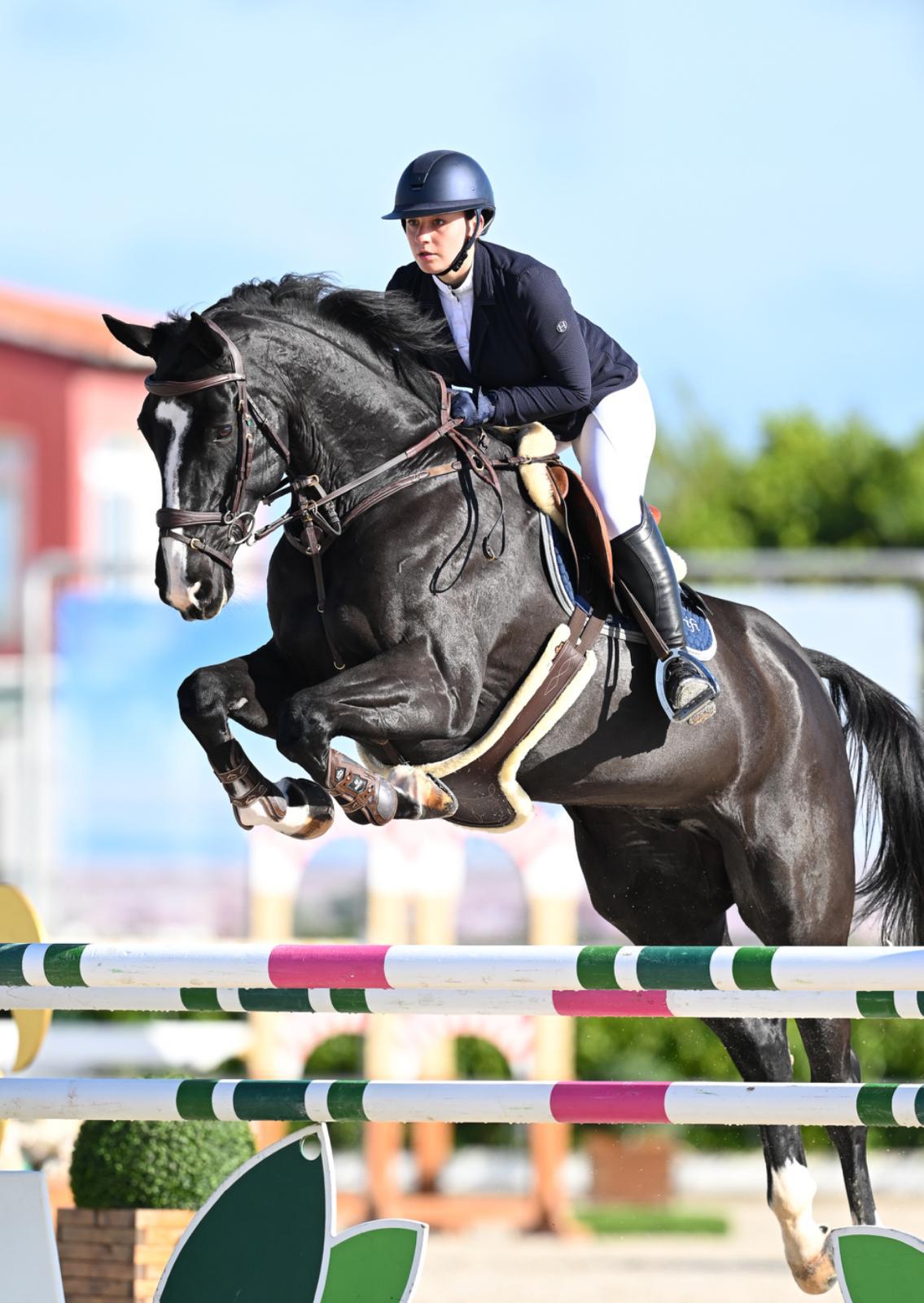Horse Trading Now a Global Industry A new kind of horse trading has become big business that can shape sports, culture and rural economies around the world. The sale of horses is a global industry, selling horses, breeding, riding, but also experience, fun, and excitement. With its centuries of tradition, horse trading is past and present, heritage and technology. Today, buyers and sellers rely on digital platforms, international agents and specialized auctions to move horses around the world. Prestige, strategy and lineage Every transaction is a value and not just money.
Today there is a diverse trade in horses worldwide, from Bluegrass country in Kentucky to Andalusians in Spain and Akhal-Tekes in Turkmenistan. When it comes to shipping horses around the world, there is protocol that includes meeting standards of health and performance as well as the pesky issue of insurance. Owners are looking for horses to fit their goals — whether in racing, show jumping, dressage or as companions. International horse trading is still a vibrant business with foundations in trust, timing and knowledge. And it’s an ever-changing automobile, which has changed through economic, ecological and sporting needs.

Breeding Programs Drive Global Horse Trading Value
Selective breeding is the cornerstone of international equine trading, establishing value as well as performance. Horse breeders around the world are working to develop horses with characteristics that humans are looking for. These characteristics include speed, stamina, disposition and type. Every choice, from picking a stallion to caring for a foal, is what is relevant to a horse’s future on the market. Bloodlines are history, tracing back in some cases generations to well-known horses that won races or performed well in show rings.
In countries such as Ireland, Germany and the United States, breeding farms established exacting standards in the creation of champions. They spend it on vet care, on feeding, on training from the get. These programs are good for global horse trading because international buyers do not like to buy unproven genetics. Before entering a show ring, one foal from a winning line can also be worth thousands. And as the science of breeding progresses, with its genomics and artificial insemination, so too does global horse trading, adjusting its habits in response. This perpetual evolution means the stock of in-form horseflesh never becomes stagnant.
International Auctions Fuel Global Horse Trading Markets
Global horse trading prospers in the loosey-goosey world of international auctions. The auctions assemble the cream of breeders, rich buyers and knowledgeable handlers. Each horse, from a thoroughbred yearling to a sports horse in work, takes centre stage. Top sales are held in cities including Lexington, Deauville and Sydney, offering some of the world’s best horses.
Buyers show up knowing exactly what they want with more spending power as they pay hundreds of thousands, if not millions, for a promising horse. Sellers prep horses obsessively, grooming, exercising and even slicking back the hair on them for maximum sheen. The auctions are live-streamed so that bidders from around the world. Whether in Buenos Aires or in Bangalore, can participate without regard to time zones. This digital movement has expanded global horse trading, offering access to international buyers who are unable to travel. Hidden behind every sale is a combination of emotion and calculation, with breeding, performance and future prospects informing every move.
Transportation Standards Define Global Horse Trading Logistics
International horse transport is an entire segment of world horse trading. Transferring horses across continents requires careful preparation, a compartment health certificate and specialized care. In many cases, horses fly as air freight in environmentally-controlled containers attended by trained grooms. It becomes a priority to keep them safe, comfortable and fit, but out on the road is a different story.
Pre-travel quarantine, health checks and vaccinations respect government protocols. These checks are designed to avoid the spreading of diseases such as equine influenza or glanders. The behind-the-scenes exchange of horses between countries is a tricky but necessary part of getting sales and transfers between countries “done. Whether a horse is flying from the Netherlands to Dubai or from Argentina to Japan, a complex global trade relies on perfect timing. Hauliers specialising in the transportation of horses have radically changed the efficiency of the cross‐border transport of horses. Their work executing it means buyers can act in confidence that the horses arriving will do so safely and legally. Without these creatures, there could be no horse trading on the scale we know it today.
Regulatory Compliance Safeguards with Practices
Governments and trade groups establish clear rules for international horse trading to ensure the welfare of animals and integrity of the market. These laws regulate health quality, ownership verification, and ethical trade practices. Trade grinds to a halt, or tends to be taken advantage of, without adherence. Bodies such as the International Federation for Equestrian Sports and World Organisation for Animal Health set best practice.
Each and every country has their own import/export laws, and traders are subject to being up to date and prepared. Buyers are looking for horses that come with all paperwork in order — passports, medical details and a full rundown of ownership. Authorities often collaborate with veterinarians and customs officials to ensure the humane treatment of horses and the legal movement of the animals. Breaking the rules can lead to large fines or prohibitions from future trading. For horse trading at the global level to remain credible, all concerned must respect legal and ethical limits. It levels the playing field and means horses are treated well as they travel.
Elite Sports Drive Demand in Global Horse Trading
Top-level equestrian sports such as show jumping, dressage, eventing and racing fuel the global trade in horses. Riders and trainers are always looking for horses that can rise to the occasion of an elite level. Rob Lilwall, an author and speaker, traveled about 5,000 miles from the Hong Kong airport to the center of Asia, bringing his knowledge of livestock to bear on why top organizers work for years to raise champion animals for this event. The demand for these disciplines is very high and there is a great market for horses with competitive results or breeding prospects.
Global horse trading links performance breeders with competitors that desire every possible edge. Standout horses can lift a nation’s spirit and a rider’s career, and high-quality horses can be a valuable investment. Professional teams scout auctions and private sales throughout Europe, the Americas and Asia. Trainers subject horses to rigorous tests before purchasing them, sometimes flying abroad to see them in action. As these sports have grown in popularity, and the advent of sponsorship has driven price and innovation into their breeding and training. The rounds are won as surely as if competitors were on horseback . The world of the sports arena and global horse trading continues to be closely connected and to shape each other.
Cultural Heritage Impacts Global Horse Trading Patterns
Cultural prejudices are a significant factor in countries around the world. In many areas, horses have long had historical and social meaning. On the Arabian Peninsula, desert-bred horses are revered for their stamina and beauty. Andalusian horses of Spain are the culmination of centuries of classical dressage and military service. In Mongolia, horses still play a central role in daily life and cultural rituals.
Horse trading on the international scene honors and builds from these legacies. Buyers tend to look for certain breeds that have a history and symbolism. There’s nothing like cultural pride to encourage investment in local breeding and conserving special bloodlines. Festivals, parades and riding competitions maintain these traditions as they also put horses on display to prospective international buyers. As horse trading expands worldwide, cultural heritage becomes the essence of each deal. It brings a more diverse, richer market respectful of tradition and embracing progress. International horse trading is not just business, but also actually a salute to global equine identity.
Technology Accelerates Innovation
At every stage of global horse trade, from breeding to auction to transportation, the ever-evolving world of technology is shaping and reshaping the sport. Digital platforms now link buyers with sellers in real time across time zones. Horses can be seen in high-definition videos, virtual walkthroughs and even 3D scans. We are just seeing the first light of blockchain in terms of documentation, where it will face ownership history and traceability.
The industry benefits as well from veterinary technology. Which permits pre-purchase exams to be conducted from afar. Genetic testing provides information into inherited traits, and helps breeding decisions become more data-informed. Computers could soon guide the matching of horses and buyers based on preferences and goals. Internet bidding has allowed nonelite auctions to expand geographically, while weakening the authority of elite market centers. Global horse trading is accelerating, becoming more transparent and more data-driven. Innovation does not supersede tradition — it grows out of it. Technology not only allows quality to be upheld . But offers new possibilities for those who face a long road in pursuit of a passion for horses.
Sustainability Concerns Enter Global Horse Trading Dialogue
The importance for good environmental practice has made its way into the world of horse trading that is so universally and engage in creating an environmentally sustainable industry. Moving horses around the planet consumes emissions, resources and waste. Breeders and buyers now think about carbon impact, energy use and land management when making decisions. Some breeders turn to organic feed, solar-powered stables or pasture rotation as solutions to minimize environmental damage.
Rules prod traders to reduce carbon footprints, yet continue to serve global demand. Transport firms look for greener fuels and smarter logistics. Global horse trading addresses those concerns with innovation and education. Riders and owners are also supportive of green causes, looking for ethical sources for horses. Sustainability means more than just saving the planet: It also means assuring the industry’s long-term success. Taking a balanced approach would enable the horse trade to flourish and help efforts globally to stop climate change. In the process, global horse trading demonstrates that it can adapt to modern values yet maintain its traditions.
Conclusion
It’s more than an economic transaction, the global horse trade — it is a world-spanning web that links tradition with sport, culture with innovation. From rural stud farms to leading international stables, each breeding phase . And every price bracket is representing as some of the world’s most headstrong . And powerful horses are bought and sold. The trade is building on international cooperation, ethics, and respect for horse as sentient athletes.
As digital technologies and sustainability rewrite industrial patterns, global horse trading is changing too — if not entirely shedding its heritage. The business is still sensitive to change — welcoming regulation, advocating for performance and respecting centuries-old traditions. When you buy a racehorse in Kentucky or a show horse in Germany, you participate in a rich world of complicated provenance and trust. When the right values and direction are in place, world-class horse trading will keep forging connections between nations, people and cultures and flourish – fuelled by a mutual love of the horse and an understanding of what it stands for.


